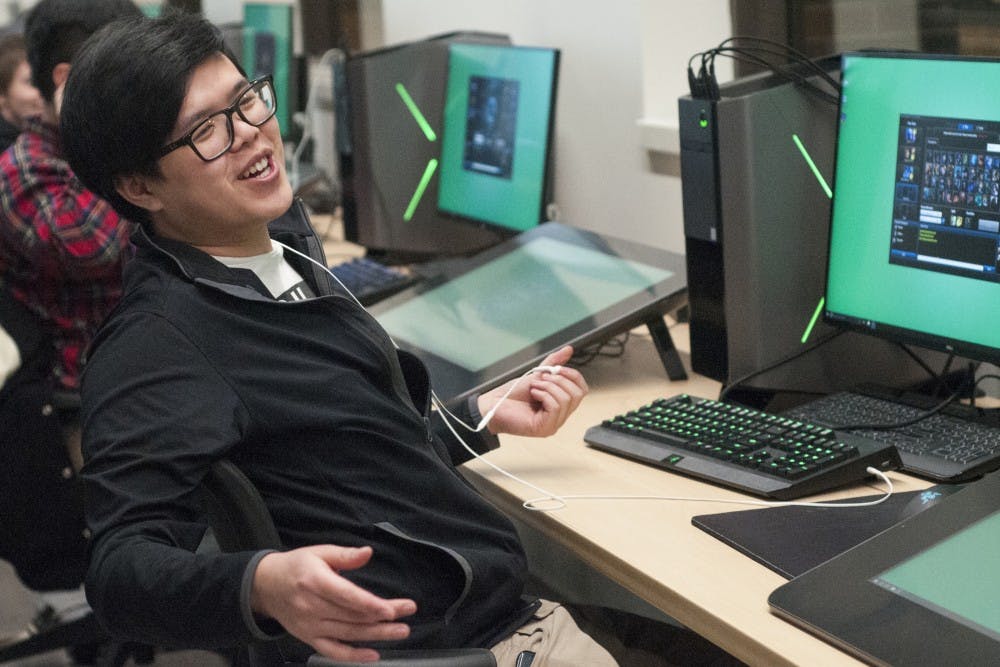Video games can be considered a form of relaxation, a method of releasing anger and a means of escape from the real world.
Few people are able to play video games at a highly competitive level, and even fewer are able play these video games, or esports, at a professional level.
This is what the competitive MSU League of Legends club is doing, now with other League of Legends teams across the landscape of the Big Ten.
Computer science sophomore and vice president of the club Connor McDougall said there’s a difference between playing casually and playing competitively.
“When you’re playing casually, it’s not about winning or losing, at least to me,” McDougall said. “It’s more of just talking with (other players) and bonding with them and you’re all doing the same thing. You’re having fun together. Sometimes you can meet new people like that.”
For competitive playing, McDougall said players have to know the styles and tendencies of their teams.
“You have to know the ins and outs of your team, how they’re going to play, what they say, how they communicate, some of them yell really loud,” McDougall said. “All of us yell really loud.”
McDougall said the team also has an objective — rather than playing for fun, they want to play to win.
There is a big difference between playing casually and competitively, and the competitive nature draws similarities from traditional sports such as football.
“It’s not like you’re practicing football and then game time comes and you’re still goofing around and practicing,” McDougall said. “All breaks are off. You need to focus and you need to play.”
This requires a lot of time practicing to perfect strategies, which hospitality business senior Vinci Chen said makes esports like actual sports.
“To get good at something you do, it takes hours of hours of practice,” Chen said. “I would say it’s its own category of sports, (but) I would definitely say it’s an actual sport.”
But with this, McDougall said traditional sports such as football aren’t exactly the same as esports.
“You have people out there playing football, they’re practicing five to six hours a day, maybe even more and it’s a lot more physical than gaming,” McDougall said. “The physical, you don’t really need as much.”
One of the major differences between major sports and esports, chemical engineering junior and manager of the competitive team Kyle Kilponen said, is how in traditional sports players can call a timeout during the game, but in esports they can’t.
“I can’t even talk to the players during the game,” Kilponen said. “They’re very strict about the players being independent and playing their own game.”
Even without the physicality, McDougall said sports such as football and esports have a lot of similarities.
“You need coordination, you need teamwork, a lot of the same cerebral team aspects of traditional sports, you need,” McDougall said. “You drop the physical. There’s the same level, or more of team play and coordination.”
Kilponen said there are some physical aspects to playing esports, which sometimes might be overlooked.
“It’s how quickly can you press the buttons, it’s how well can you manipulate yourself in the game and there’s also decision making — in basketball, it’s basketball IQ,” Kilponen said. “We call it mechanics.”
These roles and competitiveness have also translated into ratings, as the Riot Games League of Legends World Championship in 2016 pulled in around 43 million unique viewers, while Game 7 of the 2016 NBA Finals pulled only 30.8 million viewers.
Kilponen said this type of viewership and quality of players starts at the collegiate level, and eventually turns into a “developing ground” for potential esports players.
Chen said people were skeptical at first of news outlets such as ESPN, since people thought “you could be doing other things that are proactive.”
Still, other networks are following suit. On Jan. 19, the Big Ten Network, or BTN, and Riot Games — the company that created League of Legends — announced a partnership in which BTN will broadcast the inaugural season of League of Legends on the app BTN2Go and will televise the championship, according to a press release.
The League of Legends Big Ten conference will include teams from every Big Ten school, minus Penn State University and the University of Nebraska, according to the press release.
McDougall said he thinks the esports scene will blow up, especially at MSU.
“In a couple years, it’s going to be big,” McDougall said. “I can tell you that there’s interest from people inside the school.”







